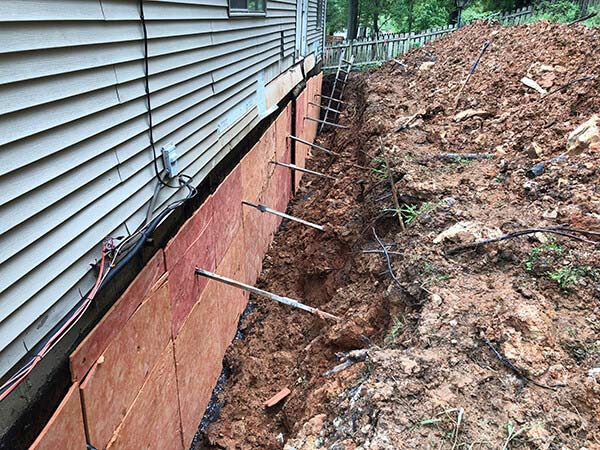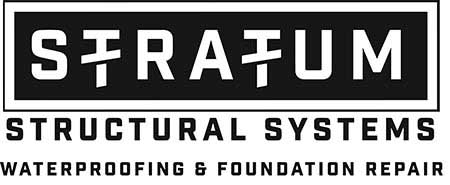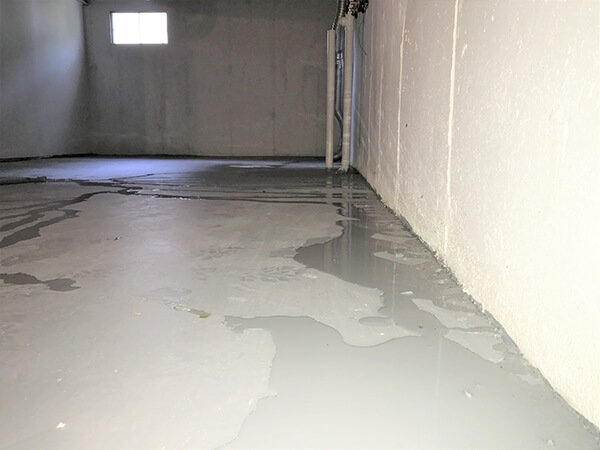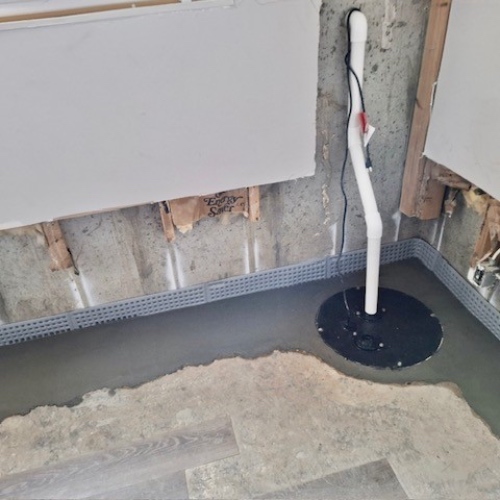Steel I-Beams vs. Wall Anchors: Choosing the Right Solution for Bowing

Bowing walls are a common yet serious issue for homeowners, especially in St. Louis. They typically happen due to our weather patterns. Our seasonal conditions lend external forces onto foundations like hydrostatic pressure, soil expansion, or frost heave. Excess water from rainfall or poor drainage can put pressure on your foundation, causing basement walls to bow inward over time. If the bowing becomes severe, it can threaten your home’s structural integrity and lead to expensive repairs. Thankfully, solutions like steel I-beams and wall anchors can stabilize or correct the problem. Let’s break down these two methods to help you decide which is right for your needs.
Steel I-Beams Pros and Cons
Steel I-beams are a reliable solution for stabilizing severely bowed basement walls. These beams are installed vertically and anchored below the footing using a concrete casement and the floor joists near the top of the wall. They’re spaced approximately five to six feet apart to redistribute lateral pressure caused by soil and water forces.
One of their biggest advantages is that they provide immediate stabilization without requiring any external excavation, making them ideal for homes with limited outdoor access.
Additionally, steel I-beams offer permanent reinforcement. This option effectively prevents further movement of the walls.
However, they do come with some drawbacks. The beams take up roughly six to twelve inches of interior basement space, which can be inconvenient for homeowners.
Also, they don’t correct existing bowing. Instead, they focus solely on stabilizing the walls in place. Lastly, in walkout basements, there may be risks related to uneven load distribution.
Overall, steel I-beams are best suited for situations where severe bowing needs urgent stabilization and outdoor access is not an option.
Pros:
- Immediate stabilization for severe bowing
- No external excavation is required (ideal for limited outdoor access)
- Permanent reinforcement; prevents further movement
Cons:
- Occupies interior basement space
- Does not correct existing bowing (only stabilizes)
- Potential risks in walkout basements (e.g., uneven load distribution)
Wall Anchors Pros and Cons
Wall anchors are an effective solution for addressing severely bowed basement walls by pulling them back into alignment. This method involves installing anchors into the exterior soil and connecting them to the interior wall with steel rods and plates.
There are two main types of wall anchors:
- Helical tiebacks: Resemble large screws and are ideal for significant corrections
- Deadman anchors: Require about 10 feet of outdoor space for installation
Wall anchors offer several advantages, including the ability to straighten walls, minimal disruption to interior space, and effectiveness in homes with accessible outdoor areas.
However, they do require excavation and sufficient exterior space. This labor-intensive work makes this option unsuitable for properties with limited yard access.
Additionally, installation can be time-intensive. Plus, there is some debate about their long-term reliability if the surrounding soil is unstable. Wall anchors are best suited for severe bowing of more than two inches in situations where outdoor access is available, and wall straightening is a priority.
Pros:
- Can correct existing bowing through gradual adjustment
- Minimal interior space disruption
- Effective for severe bowing with outdoor access
Cons:
- Requires excavation and exterior space
- Longer installation time and higher cost for helical systems
- Debate over long-term efficacy (e.g., reliance on unstable soil for anchorage)
When to Use Steel I-Beams vs. Wall Anchors
Choosing between steel I-beams and wall anchors depends on the specific conditions of your home and the severity of the bowing. Steel I-beams are ideal when immediate stabilization is needed, particularly in confined spaces where outdoor access is limited. They provide permanent reinforcement but do not correct existing bowing, making them best suited for situations where preventing further movement is the priority.
On the other hand, wall anchors are a better option when correction of bowing is desired, and outdoor space is accessible for installation. They cause minimal disruption to interior spaces and can straighten walls over time. However, they rely on stable soil for anchorage.
To ensure the best solution for your home, you must consult a structural engineer who can evaluate site-specific conditions. They must assess soil stability and the extent of damage before recommending the appropriate method.
How to Address Bowing Walls
Bowing walls require careful evaluation by experts to ensure the right solution is implemented. A thorough soil analysis is critical, as soil type and stability directly impact repair methods. For example, clay-heavy soils, common in St. Louis, exert greater pressure on walls than sandy soils.
Additionally, a structural engineer needs to conduct a severity assessment. This will determine how far the walls have bowed and whether underlying issues like hydrostatic pressure or frost heave need to be addressed before repairs begin.
Proper evaluation ensures that the chosen solution, whether stabilization or correction, effectively resolves the problem and prevents further damage.
There’s an ongoing debate among professionals about the most reliable method for addressing severe bowing. Some experts favor steel I-beams for their long-term stability. Many contractors like that they provide immediate reinforcement without relying on exterior soil conditions.
Others advocate for wall anchors, which can gradually straighten walls but depend on stable soil for anchorage.
In more complex cases, hybrid approaches, such as combining I-beams with helical tiebacks or integrating drainage systems, are often recommended. This approach addresses multiple factors like water management and structural reinforcement. The best solution ultimately depends on the specific conditions of your home and property.
At Stratum Structural Systems, we specialize in providing tailored solutions for bowing walls based on comprehensive assessments of your home’s unique needs. Our team combines cutting-edge technology with decades of experience to determine whether steel I-beams, wall anchors, or a hybrid approach is the best fit for your situation.
We also prioritize addressing root causes like water accumulation to ensure long-term success. Contact us today to schedule a consultation and take the first step toward safeguarding your home.




